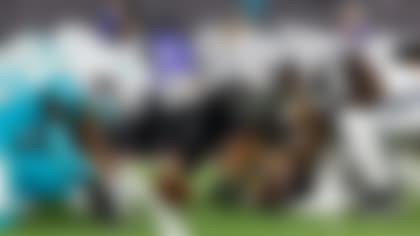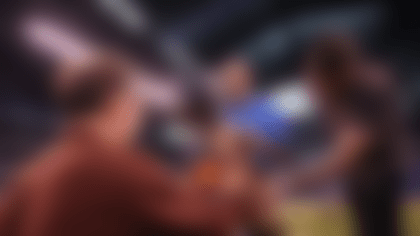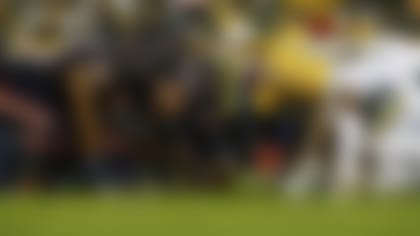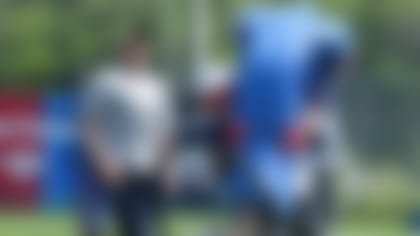SCIENTIFIC ADVISORY BOARD OVERVIEW
In 2016, through its Play Smart. Play Safe. initiative, the National Football League (NFL) allotted $40 million in funding for medical research primarily dedicated to neuroscience. The NFL then assembled a Scientific Advisory Board (SAB)—chaired by Peter Chiarelli, U.S. Army General (Retired)—comprised of leading independent researchers, experts, doctors, scientists and clinicians to develop and lead a clear process to identify and support compelling proposals for scientific research to be funded.
In 2018, by recommendation of the SAB, the NFL granted $35 million to five research projects focused on innovative translational research on concussion and comorbid conditions. In 2020, the league, via a second funding opportunity, granted $4 million for one research project for innovative preclinical, translational and clinical research related to the prevention, treatment, rehabilitation, and return-to-play following injury to the hamstring muscle group.
The remaining $1 million in funding was awarded by the NFL's Research and Innovation Committee through a request for proposals titled "Innovative Translational and Clinical Research on Alternatives to Opioids: Effects on Pain and Performance" in December 2021. To learn more about the awardees, click here.
2020 FUNDING OPPORTUNITY FOR INNOVATIVE PRECLINICAL, TRANSLATIONAL, AND CLINICAL RESEARCH ON THE PREVENTION, TREATMENT, REHABILITATION AND RETURN-TO-PLAY OF HAMSTRING INJURIES
Having awarded $35 million of the NFL's $40 million commitment, the league developed an additional funding program (the "Program") to allocate $4 million to further medical research for the purposes of inviting research proposals and providing funding for innovative preclinical, translational and clinical research being conducted by leading investigative teams related to the prevention, treatment, rehabilitation, and return-to-play following injury to the hamstring muscle group.
The SAB reviewed 89 proposals, from which they selected five finalists to give oral presentations and provide additional written materials to the SAB. After review and evaluation of the science and merit of the finalists' proposals, the SAB recommended one project to the NFL for funding. The NFL accepted the SAB's recommendations and granted $4 million in total funding to the project.
SCIENTIFIC ADVISORY BOARD MEMBERS
The members of the SAB named for the 2020 funding opportunity were selected based on their expertise and background in medical research.
In addition to Gen. Chiarelli, members of the board are:
- Ajit M.W. Chaudhari, PhD, FACSM – Professor, Division of Physical Therapy, School of Health & Rehabilitation Sciences, The Ohio State University
- Brian Feeley, MD – Professor in Residence, Chief, Sports Medicine and Shoulder Surgery, UCSF Department of Orthopedic Surgery
- Richard L. Lieber, PhD – Chief Scientific Officer and Senior Vice President, Shirley Ryan Ability Lab, Professor of Physiology and Biomedical Engineering, Northwestern University
- Timothy C. Sell, PhD, PT, FACSM – Research Professor, Atrium Health Musculoskeletal Institute, Charlotte, NC
- Lynn Snyder-Mackler, PT, ATC, ScD, FAPTA – Alumni Distinguished Professor, Francis Alison Professor
SCIENTIFIC ADVISORY BOARD MISSION
The goal of the 2020 Program is to provide funding support for research proposals from leading investigative teams in the field of the biology and rehabilitation of muscle injury, specifically hamstring strains. The NFL's intent through this Program is to demonstrate the potential for translational breakthroughs by leveraging innovative research, emerging science, current data sets and archival material related to the prevention, treatment, rehabilitation, and return-to-play following muscle injury, specifically, to the hamstring muscle group.
GRANTS AWARDED
The NFL has awarded:
- $4 million to "Hamstring Injury (HAMIR) Index: A Framework for Injury Mitigation Strategies Through Innovative Imaging, Biomechanics, and Data Analytics," led by Dr. Bryan Heiderscheit at the University of Wisconsin in partnership with Australian Catholic University and Springbok Analytics
LOWER EXTREMITY INJURY RESEARCH PROJECT TO BE FUNDED BY THE NFL PER RECOMMENDATIONS OF THE SCIENTIFIC ADVISORY BOARD
July 15, 2021
Hamstring Injury (HAMIR) Index: A Framework for Injury Mitigation Strategies Through Innovative Imaging, Biomechanics, and Data Analytics
Dr. Bryan Heiderscheit at the University of Wisconsin in partnership with Australian Catholic University and Springbok Analytics
- With the goal of reducing the incidence of hamstring strain injuries in football players, the University of Wisconsin—Madison (UW), in partnership with Australian Catholic University (ACU) and Springbok Analytics, has received a 4-year grant of $4 million from the NFL to conduct the largest prospective study ever into hamstring strain injuries. Led by co-principal investigators Bryan Heiderscheit, PT, PhD, Professor of Orthopedics and Rehabilitation at the UW School of Medicine and Public Health and Badger Athletic Performance, David Opar, PhD, ACU SPRINT Centre, and Silvia Blemker, PhD, Springbok co-founder, the team will combine state-of-the-art quantitative imaging, on-field biomechanics, and computational analytics to determine risk factors associated with initial and recurrent hamstring injuries and develop data-driven approaches to individualize risk assessment. In addition, the study intends to provide a roadmap for future research involving orthobiologics as a treatment for muscle strain injuries. This innovative study is a combined effort with the American Medical Society for Sports Medicine and will involve collecting over 1,200 player-year data from Division I collegiate football athletes. The findings from this project intend to enable an individual athlete's propensity for hamstring strain injury to be determined and, more importantly, identify targets for injury mitigation, thereby potentially reducing the injury burden on the player. (Description provided by: University of Wisconsin—Madison)
2018 FUNDING OPPORTUNITY FOR INNOVATIVE TRANSLATIONAL RESEARCH ON CONCUSSION AND COMORBID CONDITIONS
In 2017, the NFL developed a funding program for the purposes of inviting research proposals and providing funding for innovative translational research being conducted by investigative teams related to the diagnosis, treatment, and natural history of concussion (mild traumatic brain injury) and associated comorbid conditions.
In 2018, the SAB reviewed 129 proposals, from which they selected eight finalists to give oral presentations, and provide additional written materials, to the SAB.
After review and evaluation of the science and merit of the finalists' proposals, the SAB recommended five projects to the NFL for funding. The NFL accepted the SAB's recommendations and granted funding to all five projects.
SCIENTIFIC ADVISORY BOARD MEMBERS
For the purposes of the 2018 funding opportunity, the members of the SAB were selected based on their expertise and background in the field of neuroscience. Each member was identified and selected by Dr. Betsy Nabel, the NFL's former chief health and medical advisor, and Jeff Miller, the NFL's then-Executive Vice President of Health and Safety Initiatives, based on recommendations from and in consultation with members of the NFL's Head, Neck and Spine Committee.
In addition to Gen. Chiarelli, members of the board are:
- Sidney Hinds, MD, MC, Col. – Brain Health Research Program Coordinator at the Department of Defense;
- David Hovda, PhD – Director of the UCLA Brain Injury Research Center;
- David J. Shulkin, MD – former Secretary of Veterans Affairs;
- Douglas H. Smith, MD – Director of the Center for Brain Injury and Repair, and Robert A. Groff Endowed Professor and Vice Chairman for Research and Education in Neurosurgery at the Perelman School of Medicine, University of Pennsylvania; and
- Shelly D. Timmons, MD, PhD – Director of Neurotrauma, Vice Chair for the Administration Department of Neurosurgery, and Professor of Neurosurgery at Penn State Health Milton S. Hershey Medical Center.
SCIENTIFIC ADVISORY BOARD MISSION
The SAB's goal was to seek research proposals from leading investigative teams in the field of concussion and associated comorbid conditions. This Program's funding opportunity is intended to facilitate the translation of original, ongoing and existing research products into clear clinical end points, such as progressing findings to diagnostics, drugs, devices and treatments that advantage the patient, as well as advancing understanding of the short-term and long-term effects of concussion(s) and associated comorbid conditions.
The NFL's intent through this Program was to demonstrate the potential for translational breakthroughs by leveraging emerging science, current data sets and archival material on concussion and associated comorbid conditions. This Program was designed to support multidisciplinary investigative teams with strong track records of collaboration and accomplishment in the field.
GRANTS AWARDED
The NFL has awarded:
- $6,070,384 to "Prevalence of Brain Health versus Neurodegeneration in Professional Football Retirees" led by researchers at the University of Pittsburgh and University of Pittsburgh Medical Center (UPMC)
- $14,698,132 to "A Prospective, LONGitudinal and Translational Study for Former National Football League Players" led by William P. Meehan III, MD at Boston Children's Hospital and Harvard Medical School
- $9,438,473 to "Surveillance in High Schools to Reduce Concussions in Youth" led by Carolyn Emery, PhD at the University of Calgary
- $3,454,080 to "Transforming Research and Clinical Knowledge in Traumatic Brain Injury (TRACK-TBI Longitudinal)" led by Geoff Manley, MD, PhD at the University of California – San Francisco
- $1,583,138 to "The Spectrum of Concussion: Predictors of Clinical Recovery, Treatment and Rehabilitation, and Possible Long-Term Effects" led by Grant Iverson, PhD at Spaulding Rehabilitation Hospital and Harvard Medical School
As part of the process established by the SAB, investigative teams will be required to meet an annual timeline of mutually agreed upon research deliverables. In 2018, the SAB mandated that all investigators would attend an annual conference hosted by the SAB to report their findings and progress as it pertains to the milestones outlined in their proposals. This requirement was adjusted due to COVID-19 but will be reinstituted once in-person meetings are allowed with regularity.
NEUROSCIENCE RESEARCH PROJECTS TO BE FUNDED BY THE NFL PER RECOMMENDATIONS OF THE SCIENTIFIC ADVISORY BOARD
November 15, 2018
Prevalence of Brain Health versus Neurodegeneration in Professional Football Retirees
University of Pittsburgh and UPMC
- This study aims to understand whether the rates of brain health and neurodegeneration in living professional football retirees compared to a matched control group are similar or different. The study is designed, with scientific and statistical rigor, to advance the goal of understanding the long-term impact of concussive injury and other types of traumatic brain injury. The study team is composed of Pitt/UPMC physician-scientists who have extensive experience in the field, having conducted clinical trials in veterans exposed to blast injuries and treated numerous neurological injuries sustained as a result of athletic activities, giving them unique and invaluable insight into traumatic brain injuries and how to study them. (Description provided by: University of Pittsburgh and UPMC)
A Prospective, LONGitudinal and Translational Study for Former National Football League Players
Boston Children's Hospital and Harvard Medical School, William P. Meehan III, MD
- With the goal of determining the neurologic health outcomes associated with concussion and sub-concussive exposure among former NFL players, Boston Children's Hospital has received a 5-year grant of $14.7 million from the NFL to conduct a comprehensive neurologic health assessment and track the progress of former NFL players. In addition, the study will conduct laboratory experiments of 4 potential therapies for the neurological effects of repeated brain trauma. This study is a combined effort with Beth Israel Deaconess Medical Center, the University of North Carolina at Chapel Hill, the Medical College of Wisconsin and University Orthopedic Center – State College, PA. Led by William Meehan, MD, Boston Children's Orthopedics and Sports Medicine Center, the team will conduct annual follow-up neurologic health assessments for as many as 2,500 former NFL players who were originally assessed in 2001. Former players who exhibit impairment will undergo a repeat evaluation three years later. As it nears its conclusion, affected former players will be eligible for a clinical trial of those treatments that appear the most promising in the pre-clinical studies. (Description provided by: Boston Children's Hospital)
Surveillance in High Schools to Reduce Concussions and Consequences of Concussions in Youth–SHRed Concussions
University of Calgary, Carolyn Emery, PhD, Sport Injury Prevention Research Centre, Faculty of Kinesiology and Integrated Concussion Research Program
- This Pan-Canadian research program will involve a three-year longitudinal study to evaluate concussion diagnostic tools, prognostic indicators, and prevention and management strategies in youth, who account for over half of the annual burden of more than three million concussions in North America. SHRed Concussions seeks to reduce the burden of sport-related concussions (SRC) and their consequences across all youth sport populations in alignment with the NFL goal to facilitate the translation of original research into clear clinical end points that help patients and advance understanding of short and long-term effects of concussion.
- The SHRed Concussions research team includes >35 researchers representing nine Canadian universities and >30 community, government, and industry partners. The team aims to:
- Establish a concussion surveillance program nationally to evaluate concussion burden, risk factors for concussion, and predictors of recovery in 6,000 high school student-athletes across five provinces;
- Integrate a variety of tools for SRC to inform the development of multifaceted models to detect concussion and predict recovery;
- Evaluate the implementation, effectiveness, and sustainability of novel sport-specific and school-based concussion prevention strategies;
- Provide a recruitment platform for treatment studies to prevent long-term consequences of concussion. (Description provided by: University of Calgary)
Transforming Research and Clinical Knowledge in Traumatic Brain Injury (TRACK-TBI Longitudinal)
University of California – San Francisco, Geoff Manley, MD, PhD
- To treat and cure disease, we must understand its natural history and evolution, and the factors that underlie resolution or exacerbation. Advances in cardiovascular disease (CVD) can be credited directly to the Framingham Heart Study, designed to follow the same cohort over years, uncovering risk factors and ways to mitigate and treat those risks, a strategy that has paid global public health dividends. Like CVD, traumatic brain injury (TBI) is a complex pathophysiological process that can have life-long consequences. Unlike CVD, we do not fully understand TBI's natural history.
- This project leverages the largest precision medicine, short-term natural history study of TBI to date: the Transforming Research and Clinical Knowledge in Traumatic Brain Injury Study (TRACK-TBI), executed by a network of academic, private, and public partners. TRACK-TBI's 3300 injured subjects and controls have been followed for 1 year after their injury; the study has amassed the world's most comprehensive serial collection of TBI neuroimaging (CT and MRI), blood-based and genomic biospecimens, and clinical outcome assessments. In TRACK-TBI Longitudinal, we will seek to further advance our understanding of TBI's natural history by extending follow-up of the TRACK-TBI cohort by an additional 1 year.
- We will re-contact the entire cohort with one annual telephonic follow-up, capturing neuropsychological and cognitive symptoms and life function/quality, screen for neurodegenerative disease (e.g., dementia, Alzheimer's, CTE, Parkinson's, ALS), and post-traumatic disorders (e.g., post-traumatic epilepsy); a subset of responding participants will undergo in-person assessment, including advanced MRI, provide biospecimens for biologic and genetic analyses; subjects will be invited to consent to brain donation for neuropathologic analyses. (Description provided by: University of California – San Francisco)
The Spectrum of Concussion: Predictors of Clinical Recovery, Treatment and Rehabilitation, and Possible Long-Term Effects
Spaulding Rehabilitation Hospital and Harvard Medical School, Grant Iverson, PhD
- Dr. Iverson is leading a multidisciplinary team of experts from the United States, Canada, and Australia to conduct transformative research across the spectrum of concussion in collision sports such as football, hockey, soccer, rugby and more. The team will examine acute effects, functional recovery, treatment and rehabilitation for youth who are slow to recover, possible long-term effects on brain health, and rehabilitation of retired amateur athletes.
- The team will conduct and publish at least 16 studies. Among the goals of the studies are to understand the effects of concussion in young athletes with pre-existing conditions, examine pre-injury predictors of clinical recovery from concussion, look at risk factors for persistent symptoms in High School and Collegiate Athletes, develop new approaches for youth athletes with persistent symptoms following concussion, and develop a new virtual treatment program for retired athletes with chronic pain and brain health problems.
- The study pulls from data on more than 60,000 high school student athletes, and post-injury data from more than 5,000 students. In addition, a web-based injury surveillance system includes more than 30 high schools and 11 Division III colleges. including 1,451 individuals who sustained a concussion. (Description provided by: Spaulding Rehabilitation Hospital)











